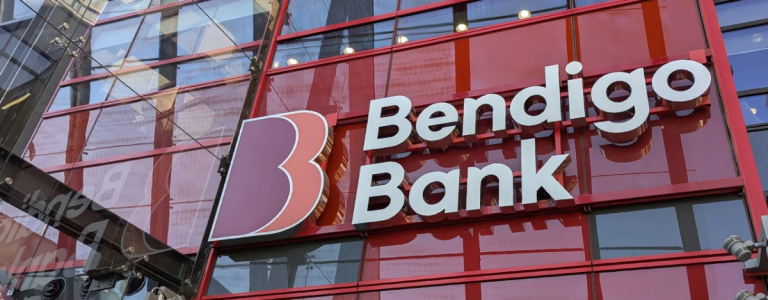28 more banks closing—leaving some with 400km drives just to transact
By
Maan
- Replies 5
Bendigo Bank’s latest move has left dozens of towns blindsided—especially one already struggling with basic access.
In regional communities where the post office is often the last banking option, the impact is personal and immediate.
Now, some locals say they’ll be forced to carry cash across hundreds of kilometres just to make a deposit.
As one town put it: ‘Where do we go from here?’
Bendigo Bank announced it would shut down 28 of its agency sites across five states from October 2025, citing declining usage.
The closures would affect communities in New South Wales, Victoria, Queensland, South Australia and Western Australia, ending a 30-year model that once extended basic banking services through local outlets like newsagencies.
The bank said the agency model was designed to provide limited services in areas that could not support a full branch.
But according to Bendigo Bank’s chief customer officer for consumer banking, Taso Corolis, a shift in customer behaviour had made the model unsustainable.
‘To preserve what makes our bank unique, we must prioritise our investments across both physical and digital channels to continue meeting the changing needs and growing expectations of our 2.7 million customers,’ Mr Corolis said.
‘We understand it may take time for some customers to adjust to these changes, and we will support them through this.’
He added the bank would connect affected customers with their nearest alternative branch.
For the rural town of Taroom in Queensland, the announcement sparked frustration and fear.
Taroom—home to around 800 people—would be left with only one in-person banking option: the local Australia Post outlet.
The nearest Bendigo Bank branch would be a two-hour drive away, in Mundubbera.
Over 100 locals gathered at a community meeting on 16 July after the news broke.
‘[Bendigo Bank has] been in our town for 10 years; all the other banks have packed up and gone,’ said local resident Steve Clarke.
‘The post office is not suitable for anyone who is a bit frail or on walkers. You can’t get into the building.’
‘Where do we go from here?’
Federal MP for Flynn Colin Boyce also attended the meeting and raised serious concerns about safety.
‘Now we’ve got a situation where we’ll have people driving several hundred kilometres to seek a bank, with possibly hundreds of thousands of dollars under the front seat of their car,’ he said.
He noted Australia Post had a strict withdrawal limit of $2,000, which posed challenges for local events and businesses.
‘And the problem with small communities when you have local races, shows and businesses, it’s now a 400 kilometre round trip to the bank,’ he said.
Despite the bank’s statement describing the closures as permanent, community members hoped to petition Bendigo Bank for a reversal.
‘All we can do is try,’ Mr Boyce said.
He added that many locals struggled with online services due to limited internet access.
‘Electronic banking is all about communication…when you live in these small rural communities, communication is somewhat suspect,’ he said.
‘To do online banking, a lot of the time it doesn’t work because of the lack of communication.’
Victoria’s Alpine Shire is also bracing for the loss of its agency in Myrtleford.
Mayor Sarah Nicholas said the move would leave yet another regional town without sufficient banking access.
‘Whether it’s an agency or a bricks-and-mortar bank building, the service is still being lost,’ she said.
She stressed that the Alpine Shire was growing, and the decision didn’t reflect that reality.
‘It’s fine for the digital natives who are coming through, and they absolutely know how it all works, but people who have to build those skills up later in life often find it difficult to navigate,’ Cr Nicholas said.
She added that residents had already begun switching banks when their preferred branches shut down.
Myrtleford was fortunate to still have a Commonwealth Bank branch—one that almost closed but reversed its decision.
If this latest round of closures feels all too familiar, that’s because it is.
Communities across the country have been pushing back against vanishing banks and limited in-person options for years.
One recent agreement offered a glimmer of hope—at least for some regions.
Read more: Major deal keeps bank branches open—what it means for communities

Losing access to a bank isn’t just an inconvenience in the bush—it’s a risk some communities say they can’t afford.
In regional communities where the post office is often the last banking option, the impact is personal and immediate.
Now, some locals say they’ll be forced to carry cash across hundreds of kilometres just to make a deposit.
As one town put it: ‘Where do we go from here?’
Bendigo Bank announced it would shut down 28 of its agency sites across five states from October 2025, citing declining usage.
The closures would affect communities in New South Wales, Victoria, Queensland, South Australia and Western Australia, ending a 30-year model that once extended basic banking services through local outlets like newsagencies.
The bank said the agency model was designed to provide limited services in areas that could not support a full branch.
But according to Bendigo Bank’s chief customer officer for consumer banking, Taso Corolis, a shift in customer behaviour had made the model unsustainable.
‘To preserve what makes our bank unique, we must prioritise our investments across both physical and digital channels to continue meeting the changing needs and growing expectations of our 2.7 million customers,’ Mr Corolis said.
‘We understand it may take time for some customers to adjust to these changes, and we will support them through this.’
He added the bank would connect affected customers with their nearest alternative branch.
For the rural town of Taroom in Queensland, the announcement sparked frustration and fear.
Taroom—home to around 800 people—would be left with only one in-person banking option: the local Australia Post outlet.
The nearest Bendigo Bank branch would be a two-hour drive away, in Mundubbera.
Over 100 locals gathered at a community meeting on 16 July after the news broke.
‘[Bendigo Bank has] been in our town for 10 years; all the other banks have packed up and gone,’ said local resident Steve Clarke.
‘The post office is not suitable for anyone who is a bit frail or on walkers. You can’t get into the building.’
‘Where do we go from here?’
Federal MP for Flynn Colin Boyce also attended the meeting and raised serious concerns about safety.
‘Now we’ve got a situation where we’ll have people driving several hundred kilometres to seek a bank, with possibly hundreds of thousands of dollars under the front seat of their car,’ he said.
He noted Australia Post had a strict withdrawal limit of $2,000, which posed challenges for local events and businesses.
‘And the problem with small communities when you have local races, shows and businesses, it’s now a 400 kilometre round trip to the bank,’ he said.
Despite the bank’s statement describing the closures as permanent, community members hoped to petition Bendigo Bank for a reversal.
‘All we can do is try,’ Mr Boyce said.
He added that many locals struggled with online services due to limited internet access.
‘Electronic banking is all about communication…when you live in these small rural communities, communication is somewhat suspect,’ he said.
‘To do online banking, a lot of the time it doesn’t work because of the lack of communication.’
Victoria’s Alpine Shire is also bracing for the loss of its agency in Myrtleford.
Mayor Sarah Nicholas said the move would leave yet another regional town without sufficient banking access.
‘Whether it’s an agency or a bricks-and-mortar bank building, the service is still being lost,’ she said.
She stressed that the Alpine Shire was growing, and the decision didn’t reflect that reality.
‘It’s fine for the digital natives who are coming through, and they absolutely know how it all works, but people who have to build those skills up later in life often find it difficult to navigate,’ Cr Nicholas said.
She added that residents had already begun switching banks when their preferred branches shut down.
Myrtleford was fortunate to still have a Commonwealth Bank branch—one that almost closed but reversed its decision.
If this latest round of closures feels all too familiar, that’s because it is.
Communities across the country have been pushing back against vanishing banks and limited in-person options for years.
One recent agreement offered a glimmer of hope—at least for some regions.
Read more: Major deal keeps bank branches open—what it means for communities
Key Takeaways
- Bendigo Bank will shut 28 agency locations in five states from October 2025.
- The agency model, which offered limited services in small towns, was introduced 30 years ago.
- Towns like Taroom face a 400-kilometre round trip for full-service banking.
- Community leaders warned of safety risks, digital literacy gaps, and lack of local options.
Losing access to a bank isn’t just an inconvenience in the bush—it’s a risk some communities say they can’t afford.








